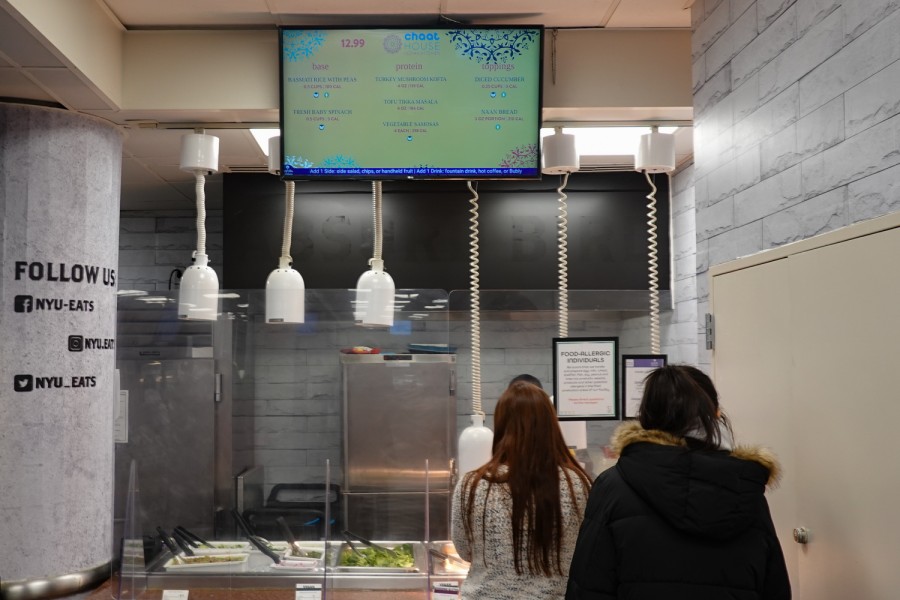Opinion: Dear NYU Eats, samosas are not protein
Chaat House, the newest addition to Palladium dining hall, makes avoidable mistakes in its take on Indian cuisine.
The Chaat House food station at the Palladium dining hall. (Kevin Wu for WSN)
February 1, 2023
When I said my goodbyes at the end of winter recess, all I could think about was everything I would miss: my mom, her cooking, my dad, his cooking, my grandma, her cooking, my friends — and their parents’ cooking. The thought of returning to dining hall food after a month of treating myself to delicious, spicy, home-cooked Indian meals was awful.
This year, NYU Eats introduced Chaat House, an Indian food station at the Palladium dining hall. I didn’t expect perfection, but I was still excited to have options that might remind me of home. After trying the food served at Chaat House though, I was severely disappointed. The Indian food lacked the distinctive spices that make the dishes so iconic, and the options available do not reflect those found in Indian cuisine. Chaat House felt like a hodgepodge of excess ingredients — not an honest attempt at providing a diverse menu.
The first time I visited Chaat House, I found dishes including a curry with coconut, broccoli and corn curry. The following week, they offered turkey, mushroom kofta and tofu tikka masala. Jalapeños are a recurring option for toppings, and kale is a common option for “grains.” None of these ingredients are commonly used in most Indian cuisines, especially not in the manner that Chaat House serves them.
The tofu curry wasn’t even vegan. In that case, they could easily have used paneer instead to make it at least slightly authentic.
At Chaat House, diners can only pick one “protein” option and four “toppings,” but Indian food is rarely structured in this style. One of the “proteins” offered is samosas — pastries that are commonly filled with potatoes and enjoyed as an appetizer or snack, not a main course.
Additionally, the “toppings” offered at Chaat House include naan, several chutneys and garnishes, many of which do not traditionally pair with Indian cuisine, nor with the curries offered that day. What is most frustrating is that the menu refers to naan as “naan bread,” a redundant name that’s worse than the “chai tea” that Starbucks has popularized.
These missteps indicate sloppiness and laziness on NYU’s part. My perspective is limited as a North Indian as well — there is a whole realm of South, West and East Indian food that the institution hasn’t even explored. Instead, NYU has reduced the entire cuisine of one of the most diverse regions in the world into a few clumsy options.
NYU has an international student population of over 20,000. Part of what defines the identities of international students is food. If NYU Eats wants their inclusion of global cuisines to be successful, it is vital that it emulates what makes each one unique.
WSN’s Opinion section strives to publish ideas worth discussing. The views presented in the Opinion section are solely the views of the writer.
Contact Naisha Roy at [email protected].

























































































































































